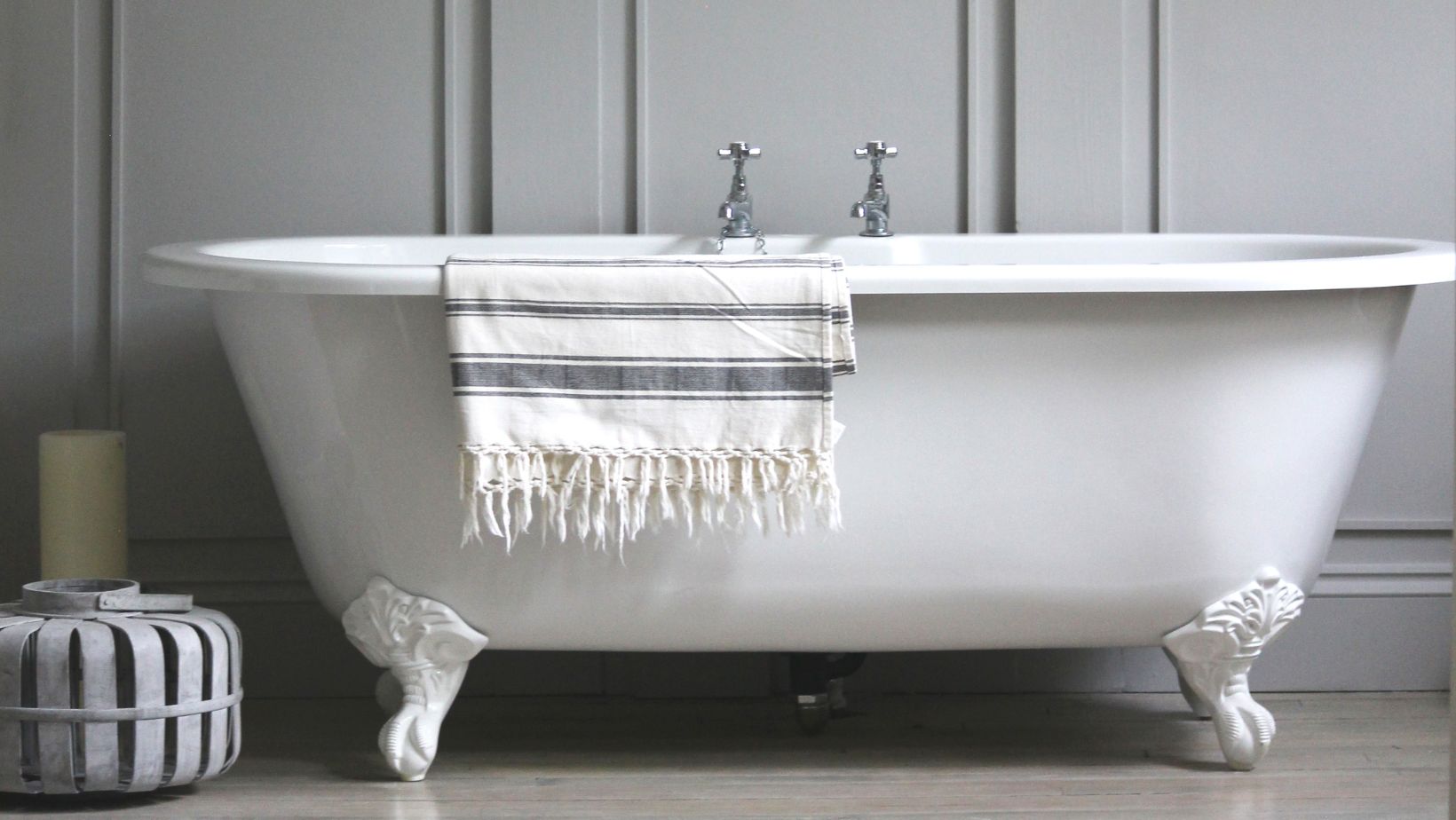Selecting the right material for your bathtub is a crucial decision when designing or renovating your bathroom. Each material has its own set of advantages and considerations, so it’s essential to weigh your options carefully. In this guide, we’ll explore some of the most common bathtub materials and help you determine which one might be the best fit for your needs.
1. Acrylic
- Advantages: Acrylic bathtubs are popular due to their affordability, versatility, and lightweight nature. They come in various shapes and sizes, are easy to clean, and maintain water temperature well.
- Considerations: Acrylic can scratch and is susceptible to fading and cracking over time. Quality varies, so choose a reputable brand for durability.

2. Porcelain-Enameled Steel
- Advantages: These bathtubs are known for their affordability and durability. They are resistant to chipping, scratching, and fading, making them an excellent long-term investment.
- Considerations: Porcelain-enameled steel tubs can be heavy and may require additional support in some installations. They also tend to lose heat more quickly than other materials.

3. Fiberglass-Reinforced Plastic (FRP)
- Advantages: FRP bathtubs are lightweight, affordable, and easy to install. They are resistant to corrosion and offer good insulation to maintain water temperature.
- Considerations: Like acrylic, they can scratch and may not be as durable as other materials. Quality can vary.

4. Cast Iron
- Advantages: Cast iron bathtubs are renowned for their durability and classic, timeless appearance. They retain heat exceptionally well and are resistant to scratches and dents.
- Considerations: They are heavy, which may require additional floor reinforcement. Cast iron bathtubs can be expensive, and their weight can make installation more challenging.

5. Cultured Marble
- Advantages: Cultured marble is a composite material that offers a luxurious appearance similar to natural stone. It’s durable, easy to clean, and customizable in terms of shape and color.
- Considerations: While durable, it can still chip or scratch. Proper care is essential to maintain its appearance.

6. Natural Stone
- Advantages: Natural stone, such as granite or marble, creates a luxurious and unique bathtub. It’s incredibly durable, resistant to scratches, and adds a touch of elegance to your bathroom.
- Considerations: Natural stone is heavy and may require additional support. It can also be more expensive than other materials and may need periodic sealing to prevent staining.

7. Copper or Brass
- Advantages: Copper or brass bathtubs are prized for their aesthetic appeal, heat retention, and antimicrobial properties. They develop a beautiful patina over time.
- Considerations: They are among the most expensive bathtub options. The patina development may not be desirable for some homeowners.

Ultimately, the best material for your bathtub depends on your budget, style preferences, and maintenance considerations. It’s crucial to assess your needs and priorities before making a decision. Whether you opt for the classic durability of cast iron, the versatility of acrylic, or the luxury of natural stone, your choice should align with your vision for the perfect bathroom space.


